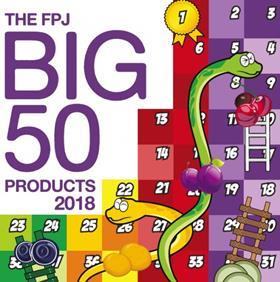
The FPJ Big 50 Products ranks the 50 best-selling fresh fruit and vegetable products by sales value, using Kantar Worldpanel data for the 52 w/e 20 May 2018.
New potatoes
Value: £286m (-3.4%) Volume: 242.8m kg (-2.2%)
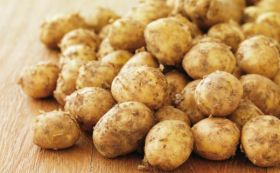
A new dawn for new potatoes
This year’s long, hot summer is arguably the best thing that could have happened to the new potato category – from a sales, if not a production perspective – following a year of value and volume decline. A favourite salad accompaniment, weeks of sunshine should give the coming year’s figures a leg up.
The sector is in need of a boost following a miserable start to the season, with cold, wet weather hitting the Jersey Royal crop. “The continued reduction in the level of promotions on new/baby potatoes has contributed to the overall decline in this sub-category,” adds Leon Mundey, marketing director at Greenvale, who points out that promotional activity has dropped from 11 to seven per cent year on year.
There has also been a fall in the average selling price for new potatoes over the past year, though weather-driven shortages of supply could be expected to have an impact on next year’s figures if shelf prices rise again.
As for new developments, innovation in the sector is focused on delivering more convenient, premium products for shoppers, according to Mundey, which will help to drive sales in the coming years. Organic potatoes is another area of potential growth.
12. Raspberries
Value: £270.6m (+7.2%) Volume: 24.1m kg (+9.7%)
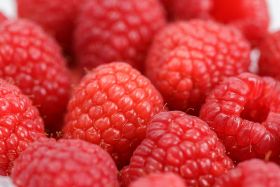
Fruit quality drives sweet success for raspberries
While much of soft fruit’s fanfare has been directed towards blueberries’ “superfood” qualities, or the dominance of strawberries, raspberries have quietly risen up the FPJ Big 50 rankings faster than any other berry. In three years the category has added almost £100 million in value as consumers respond to sweeter, larger and more consistent varieties, such as Sapphire and Driscoll’s Maravilla. The fruit has risen from 18th place in the FPJ Big 50 in 2015 and now has its sights set on the top ten.
Consistent supply and quality throughout the year have bolstered demand, with the Adelita variety grown in Spain throughout the winter. “We are continually astounded by how much you can drive demand by supplying a large, bright, consistent-eating fruit,” says BerryWorld’s Chloe Butler. “Flavour and quality is essential and even in the coldest, darkest months we are producing and selling a summer fruit; that’s got to be appealing.”
Nick Marston, chairman of British Summer Fruits, says this year is looking good after a delayed season following the Beast from the East, tipping the UK season to potentially yield fruit into November. Increased interest in their health benefits could soon see them match the blueberry in popularity.
13. Baked potatoes
Value: £244m (-5.1%) Volume: 276m kg (+0.4%)
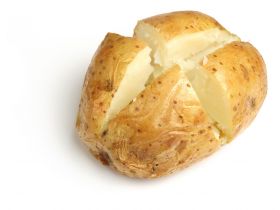
Popular snack continues to resonate
Value sales might have dropped by more than five per cent in the past year as a result of falling prices, but the figures belie what is in fact an encouraging picture.
Baking potatoes are getting extra exposure from the rise of more independent cafes, such as The Potato Project, opening up, while at home shoppers have latched back on to the many toppings that can be added for a quick and convenient snack.
“Baking potatoes continue to be a favourite for shoppers and penetration in this sub-category is up by around two per cent year on year, which combined with lower average prices has seen volume sales maintained,” explains Leon Mundey, marketing director at Greenvale. “Premium baking potatoes also continue to stand out in this category, delivering around 30 per cent volume growth.”
That premium element could be a valuable area of further growth for the sector, particularly as baking potatoes have reinvented themselves as a vogue product in the eating-out sector.
If the two markets can continue to dovetail, and a little more value comes back into the category, it should continue to provide a good news story for potato growers in the coming year.
14. Pears
Value: £228m (+3.5%) Volume: 124.6m kg (-7.7%)
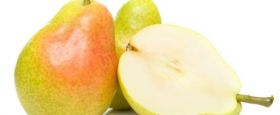
Mixed year tempers optimism for pears
Like apples, pears had a challenging season last year, with spring frosts damaging orchards and driving down yields. This contributed to a 7.7 per cent reduction in volume sales.
This year growers are expecting another testing campaign, with a “real shortage” emerging in small Conference pears, according to Alan Griffiths of OrchardWorld. “It’s been very difficult to meet all of our customer specifications,” he says. “There’s a reasonable tonnage across the UK and Europe but there have been fewer fruits on the tree so the pears have been bigger. We’ve really struggled to get what we traditionally have – a 55-65mm pear in a standard pack.”
The supplier has responded by selling fewer pears per pack to achieve the same weight, and Griffiths reports that customers have “kindly accepted a specification change”.
Looking forward, Griffiths sees opportunities for import replacement and a longer sales window, thanks to investment in better storage facilities, and some growers such as AC Goatham & Son have made significant investment in the category.
The development of ripe and ready product has injected real impetus into the sector, and as long as suppliers can still be convinced to make what can be a highly costly outlay on new orchards, the future is promising.
15. Cucumber
Value: £223.4m (+12%) Volume: 170.7m kg (+4.4%)

Cucumbers enjoy moment in the sun
The year to 20 May 2018 was a strong one for cucumber sales, with lower prices, new varieties and increased yields helping to drive up revenues. Lee Stiles of the Lea Valley Growers’ Association thinks an increase in volumes could be down to two-crop strategies and the adoption of high-wire growing methods, but he notes that poor weather at the start of the cucumber season this year saw yields drop 30 per cent lower than usual.
Fortunately for the sector, a recent push for varietal innovation is attracting new customers and appealing to a wider audience, according to Victoria Bolton of Glinwell. “The introduction of mini cucumbers and half-cucumber portions are helping to drive up sales,” she says, explaining that consumers are “big on reducing wastage now and demand for portions is rising”.
This is a welcome change for the category, which is not as accustomed to varietal development as other salad vegetables. “You always see innovation and varietal changes in tomatoes and peppers, but it doesn’t happen quite so often in cucumbers,” Bolton says.
Moving forward, growers will continue to grapple with falling retail prices and the rising cost of labour and raw materials as Brexit takes its toll on the sector. The key to widening margins could lie in new speciality varieties and value-added products.



